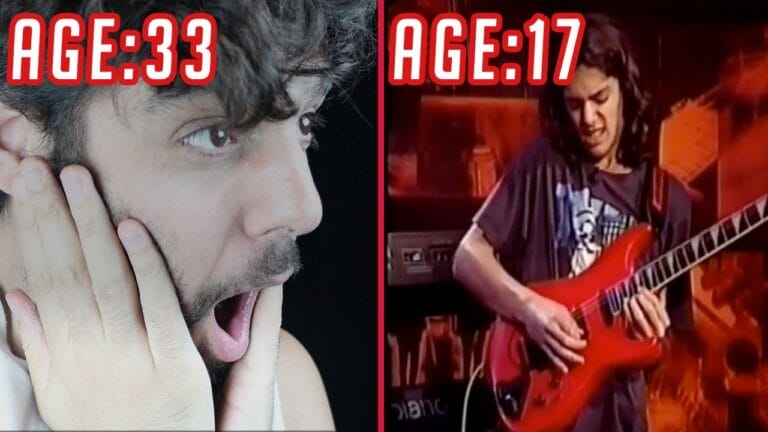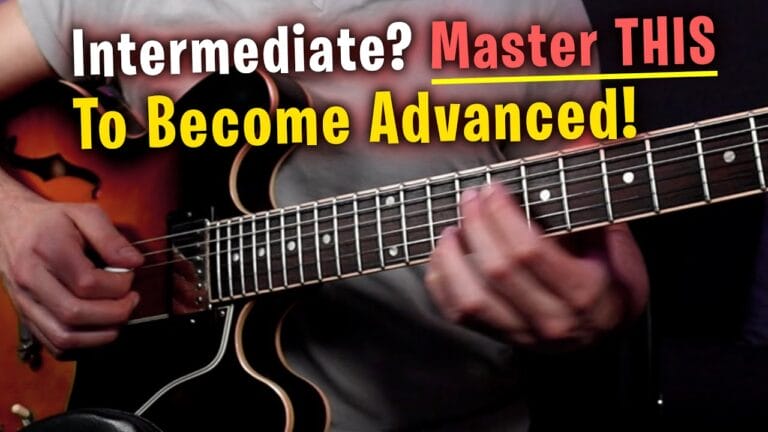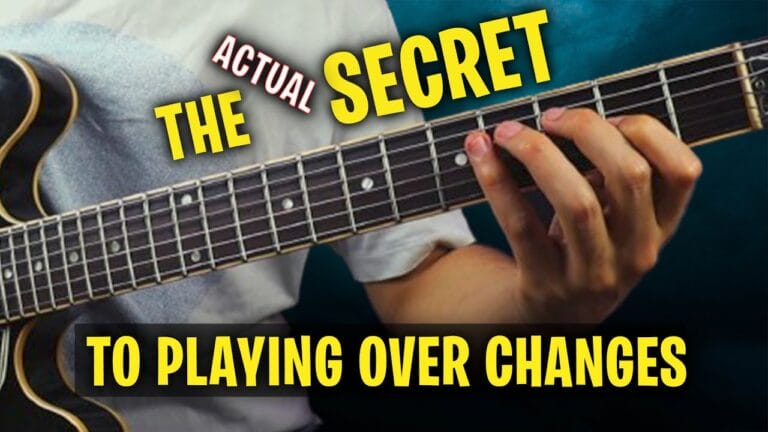The 1 Arpeggio WorkOut you MUST Know
Introduction
Plain arpeggios is one of the most essential things you can practice, and today I’m going to show you an exercise I practice to really get familiar with the arpeggios over the neck. Let’s dive right in.
[Music]
Diatonic Arpeggios
Okay, so what we’re gonna do right now is we’re gonna play the diatonic arpeggios of C major starting from the sixth degree, A minor. We’re gonna play two notes. For the A minor seven over here, it’s going to be a root and a seven. Then we’re going to jump a string, it’s going to be the five and the third, and then aiming to the root.
So we have root seven, five, third, root.
So we’re gonna use this structure to go over the different diatonic arpeggios. So we have:
- A minor seven
You can notice I’m only playing one pick per string, so I’m also using hammer-ons and pull-offs. So it’s going to be:
- Pull
- Pull
- Pick
[Applause]
Pick, pull, pick, pull, pick.
Then moving to the next chords:
- G7
- F major 7
- E minor 7
- D minor 7
- C major 7
- B minor seven flat five
And we’re back at A minor seven.
So let’s play this in time right now.
Playing in Time
Okay, so what’s gonna happen right now is I’m gonna play these notes consistently as eighth notes. So we’re getting a group of five, which is an unsymmetrical sound, and it’s gonna sound like this.
So here it is with the metronome on 85 BPMs.
[Music]
So this was descending, but we can also do the other way, you know, coming up.
[Music]
Using 4 Strings
Okay, so we just used three strings, right, to play an arpeggio, but you can also use four strings. So let me show you what I mean. We just played this, right? A minor seven over here.
[Music]
These exact notes can also be played over here using four strings.
So you can practice now being able to play arpeggios utilizing these four strings. You’re gonna get this:
- A minor seven
- G7
- F major seven
- E minor seven
- D minor seven
- C major seven
- B minor seven flat five
Back to A minor seven.
Combining Both Arpeggios
So now I’m going to combine both kinds of arpeggios: utilizing the free string arpeggios we just did earlier.
[Applause]
And then moving to the atomic arpeggio that is the third below. So if we’re in A minor seven, an arpeggio that is a third below is going to be F major seven and I’m going to play it on four strings.
So I’m gonna get this:
Or the other way around.
[Music]
So now if I move this whole structure down diatonically, I can get:
- G7
- E minor seven
Also, a four-string arpeggio. Right? Previously we had G7 played on three strings. Now we have E minor seven on four strings.
So there’s a third between E and G, diatonically speaking. Right? G7 all the way to E minor seven.
Then I’m gonna get:
- F major seven into D minor seven
- E minor 7 into C major 7
- D minor 7 into B minor 7 flat 5
- C major 7 into A minor seven
- B minor seven flat five into G7
And I can resolve it to C.
Once again, notice we’re playing groups of five here, so the eighth notes are going to be felt like:
Okay, so first of all, I’m going to play it in eighth notes and then after that, I’m going to play it in triplets and then I’m going to play it in 16th notes so you can feel that five in all kinds of subdivisions. Right? So it’s a pretty cool exercise.
So one and two, three and four and:
[Music]
Gonna move to triplets:
[Music]
Sixteenth notes:
[Music]
Outro
So that’s it for now. Please make sure to subscribe and like this video. Also, drop me a comment; that really helps. If you really want to go deeper into these kinds of subjects and really get a solid understanding of the fretboard, also learn some jazz language, check out my 51 Galactic Jazz Licks and Galactic Modern Guitar courses. By the way, make sure to check out my album “Dive.” Check it out on Spotify.
So what would you like my next lesson to be about? Let me know in the comments below. See you in the next video.
[Music]
No matter what style you play,
Controlling and combining arpeggios on your guitar is essential.
In this video you will discover 5 powerful exercises that will help you:
- Get familiar with the fretboard and visualize your arpeggios.
- Learn how to do them in a variety of rhythms.
- Combine 3string arpeggios with 4string arpeggios to create some delicious sounds.



















